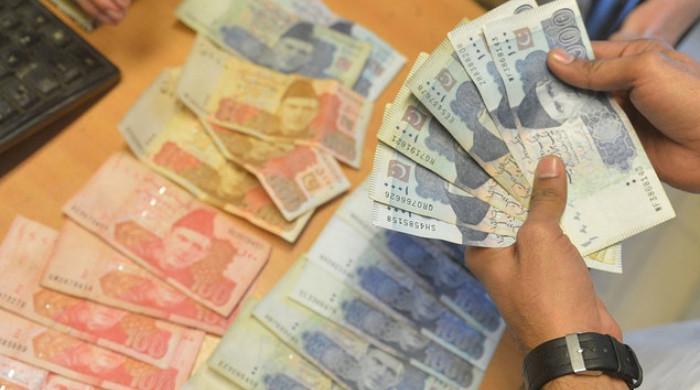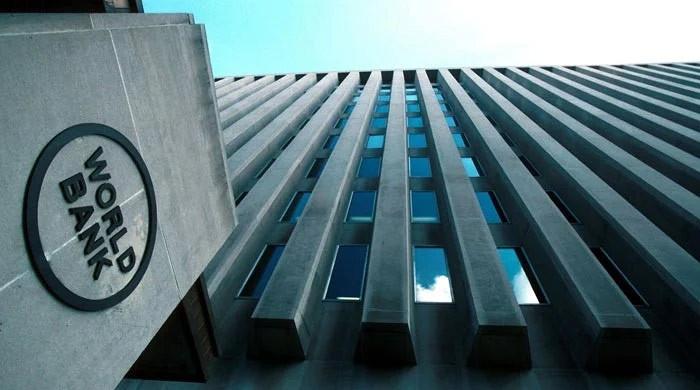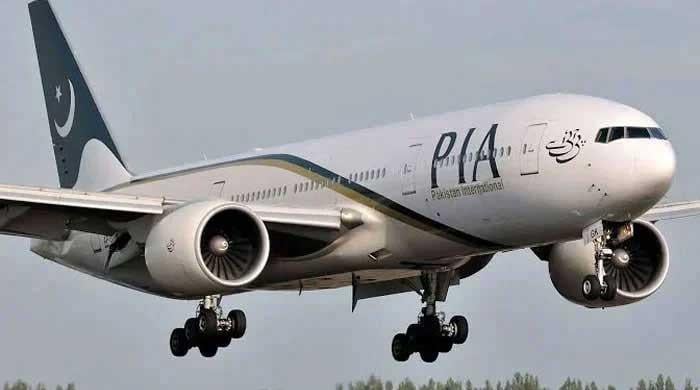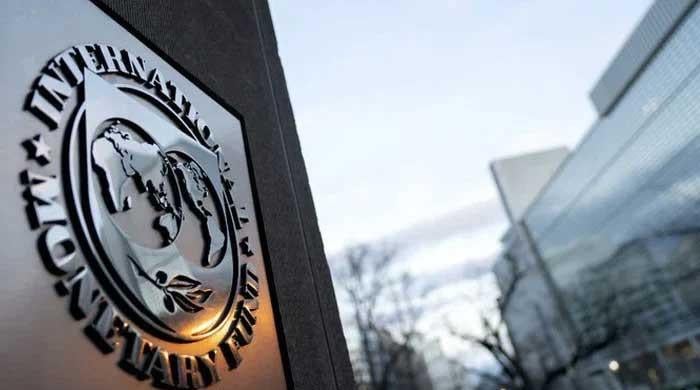Pakistan's growing financing needs may lead to another IMF loan: report
IMF assesses Pakistan’s gross financing requirement will stand at $28 billion in next fiscal year 2022-23
January 18, 2022
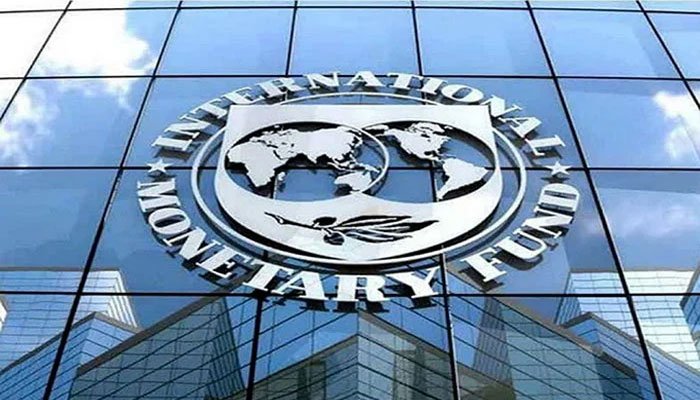
- Sources say Pakistan govt will have to accomplish two more reviews to qualify for completion of 39-month EFF programme of IMF.
- Only way to avoid another loan is to do a miracle boost up non-debt creating dollar inflows, suggests report.
- IMF assesses Pakistan’s gross financing requirement will stand at $28 billion in next fiscal year 2022-23.
ISLAMABAD: With Pakistan's gross financing requirements expected to go up to $30 billion in the next budget for 2022-23, the government will be left with no choice but to request a new loan from the International Monetary Fund (IMF) when the current programme expires in September 2022, The News reported Tuesday.
Top official sources say the government will be required to accomplish two more reviews, seventh and eight by September 2022, to qualify for the completion of the 39-month Extended Fund Facility (EFF) programme of IMF, even if everything goes well and Islamabad manages successfully to revive the existing stalled programme of $6 billion EFF after completion of the sixth review.
Despite the federal cabinet's recent approval of the National Security Policy that advises against seeking loans from the IMF and other multilateral creditors, Islamabad will have no choice but to seek a loan from the Bretton Woods Institutions (BWIs) in the face of looming gross financing requirements, the publication reported.
There must be an alternate plan to manage the financing of $45 to $50 billion over the next 18-month period if all the state institutions seriously believe in skipping the IMF loan on a permanent basis, the news report added.
Islamabad could only avoid seeking the IMF loan, provided the country manages to do a miracle by boosting up non-debt creating dollar inflows through raising Pakistan-made ups exports, remittances, and foreign direct investment (FDI) in a substantial manner. The policy of restricting imports, according to one World Bank report, does not provide permanent solutions, mainly because Islamabad had to rely heavily on imports on account of getting raw material to increase exports.
The IMF has assessed that Pakistan’s gross financing requirement will be standing at $28 billion in the next fiscal year 2022-23 but keeping in view the higher current account deficit projections, it is expected that the overall external financing requirement will cross the $30 billion mark in the next fiscal year.
Now the question arises of how the country is going to manage the external financing of $45 to $50 billion over the next 18-month period (Jan-June) 2021-22 and next fiscal year 2022-23.
The National Security Policy recently approved by the federal cabinet recommended not to get loans from the IMF and other multilateral creditors but keeping in view the existing debt trap, it seems impossible to manage the external financing requirements without the support of the IMF programme.
The external debt servicing requirement is projected to touch $13 to $13.5 billion in the next budget 2022-23 and the current account deficit may not go down from $12 to $14 billion. The current account deficit for the ongoing fiscal year 2021-22 is projected to remain around $15 to $16 billion, while the external debt repayments, including principal and mark-up, will be standing at $12.4 billion.
The current account deficit stood at $7.1 billion for the first five months (July-Nov) period of the current fiscal year and was all set to hover around $1.5 to $2 billion for December 2021, so it might go close to $9 billion for the first half (July-Dec) period of the ongoing fiscal year 2021-22.
It was the same level of the current account deficit in the first half of 2017-18 under the PMLN-led government when it had touched the $18 billion mark.
One top official, who possessed vast experience in dealing with Pakistan’s economic issues throughout his career, said that there was a need to evolve a consensus among all the relevant stakeholders to forget about economic growth for a few years and manage the external sector’s vulnerabilities. “If we remained unable to manage the balance of payments properly, it could trigger a full-fledged crisis, where the foreign currency reserves would start depleting,” he added.
There is another risk to the external sector if the prices of POL products remained hovering around $84 per barrel, then the petroleum imports bill could touch $16 billion on a per annum basis.
When this scribe contacted former Director-General Economic Reform Unit (ERU), Ministry of Finance Dr Khaqan Najeeb for seeking his comments, he said Pakistan’s growth continues to be vulnerable to a balance of payments crisis. This is largely due to a high-income elasticity of demand for imports, creating a huge trade deficit and an unmanageable current account deficit, he added.
He said the increased dependency on imported energy and rise in the commodity prices globally have increased external account difficulties.
He said that for the next couple of years, the state of the external balance of payments (BoP) will remain the key determinant of the stability of Pakistan’s economy. The trend of BoP has serious implications on the level of foreign exchange reserves and the exchange rate in the country. He said that Pakistan’s balance of payments will have to be carefully managed considering the heightened need for external repayments in the coming years, referring to the debt repayment to be made on the external loans of the government.
The Pakistani authorities need to put up a serious plan that how this kind of elevated foreign financing requirement will be met as the IMF programme comes to an end in September 2022.
“This is the real forward planning, which gives confidence to the investors and markets that the policymakers have a sense of medium-term sustainability of the economy. The country must demonstrate a macro growth strategy,” he added.
Dr Khaqan further said that the BoP vulnerability also indicates the need for maintaining a manageable current account, adding that it is needless to say that the current account at five% of GDP estimated for FY22 is not a sustainable level and the country should be thinking about the levels under three% of the GDP and ensure the funding for that level is arranged.
This requires a serious analysis of the trade gap. The real challenge with the trade deficit is the low export receipts and this is as concerning as the large import bill, he added.
He was of the view that it is extremely concerning that Pakistan’s exports as a share of GDP, fell from 16 percent in the late nineteen nineties to just above ten percent currently.
An analysis of the past two decades shows that the exports have been low as a percentage of the GDP and the growth rate, very small, he said, adding that the export fundamentals are in dire need of correction. Businesses are not incentivised enough to enter the export market. Low productivity and little diversification continue to be perennial unsolved issues, while weaknesses in the exports need a structural correction, he said.
He said that Pakistan’s export competitiveness needs a tariff rationalisation strategy and ensuring financing for expansion in production, adding that the real hard work is to upgrade the productivity of businesses as well as their innovative capacity. These are the changes needed to integrate with the world and achieve long-term external account stability, he concluded.




